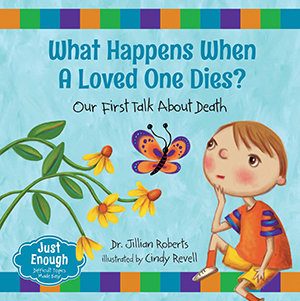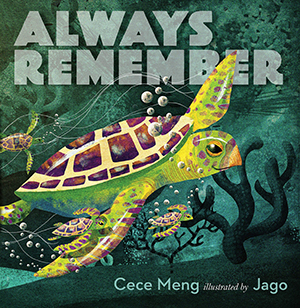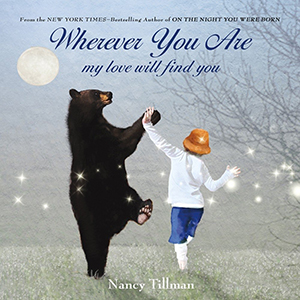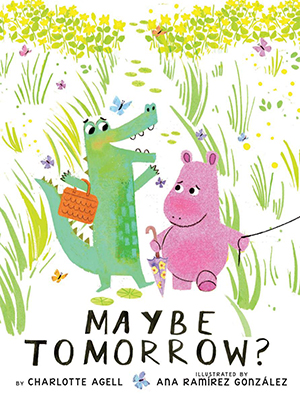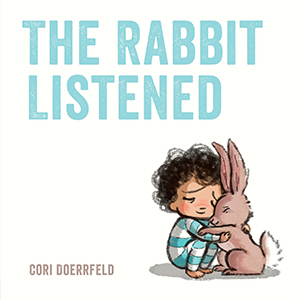Reading picture books together to help grieving children
Posted on November 24, 2020 at 6:00 am

By Tammy Henry
At some point in our lives, all of us will face the death of a loved one and the grief that such a loss entails. Facing death is never an easy thing, and for children, who have significantly less experience with the complexity of life and emotions, it can be a bewildering and scary time in their lives when someone close to them dies.
According to the Childhood Bereavement Model (CREM), 1 in 17 children in Washington state will experience the death of a parent or sibling by the age of 18. That’s about 93,000 children dealing with grief across the state.
Grieving children are at an increased risk of delays in their academic, social, and emotional development. Unaddressed grief issues can have long-term effects on children, following them even into adulthood.
To bring awareness to the unique needs children face when a loved one dies, the National Alliance for Grieving Children has designated November as Children’s Grief Awareness Month.
One way adults can assist grieving children is to read picture books aloud with them.
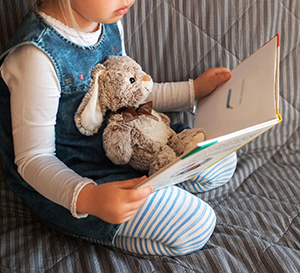
Establish & maintain reading routines
Children feel safer and more secure when they have established routines in their lives. Routines for children are of even greater importance following the loss of a loved one.
Reading picture books aloud together can be one of the routines that brings predictability and stability to the child’s life. Bedtime can be an ideal time to read aloud, but any time will do. Any picture books the child enjoys are the best books to read aloud.
To meet specific needs of a grieving child, there are some picture books that can be read. These books need to be read with sensitivity and at a time when the adult has uninterrupted time to spend with the child beyond reading. These books can help a child gain a more complete understanding of death and dying, remember their loved one, feel they are loved, deal with sadness, and feel less alone in their grief.
Picture books can also help adults learn about grief and how to help grieving children. Often the adult who is caring for a grieving child is also grieving. This can be a challenging prospect: How can I help my grieving child when I am also facing the loss of a loved one?
Reading picture books together is one a way to help the grieving process for all involved.
Picture books to help understand death & dying
There are picture books written specifically to answer the questions children may have about what it means to die, what happens when someone dies, and what happens at a funeral service.
These questions can be difficult to know how to answer. Picture books can give adults the thoughtful words to answer these kinds of questions. These specialized books have been written by authors whose profession entails working with children and grief. They are straight forward and answer many of the questions children may have.
- What Happens When a Loved One Dies? Our First Talk about Death, by Dr. Jillian Roberts
- Lifetimes: The Beautiful Way to Explain Death to Children, by Bryan Mellonie and Robert Ingpen
- When Dinosaurs Die: A Guide to Understanding Death, by Laurie Krasny Brown and Marc Brown
Picture books to remember loved ones
Books that share a story of characters remembering or finding ways to remember their loved ones can provide a segue for a grieving child to also find ways they can remember their loved one. Adults can tell stories and share their own memories of the person who has died.
These books can help children process that, even though their loved one is no longer with them, their memories of them keep them alive in our minds and hearts.
After reading stories about remembering, new rituals can also be created to honor their loved one on holidays or special occasions. Another idea: A grieving child can make a special picture frame, scrapbook, or memory box, or even sew a comfort pillow from the loved one’s shirts, with adult supervision or help.
- Always Remember, by Cece Meng
- Everywhere and All Around, by Pimm van Hest
- Grandpa’s Stories: A Book of Remembering, by Joseph Coelho and Allison Copys (available as an eBook through hoopla)
Picture books for feeling loved
Children are very vulnerable when a loved one dies. They need reassurance that they will always be loved by the people around them now and by the loved one who has died.
- Wherever You Are My Love Will Find You, by Nancy Tillman
- How Do I Love Thee? by Jennifer Adams and Christopher Silas Neal
- That’s Me Loving You, by Amy Krouse Rosenthal and Teagan White
Picture books to help with sadness
These books may be most helpful to sensitive children because they help a child understand the sadness they are feeling without dwelling on the death. These stories bring hope that the sadness they are carrying won’t always be quite so big and heavy.
- Maybe Tomorrow? by Charlotte Agell
- When Sadness Is at Your Door, by Eva Eland
- Celia, by Christelle Valliat
Picture books to help feel less alone
Reading books about others who have faced the death of a loved one can help children feel more understood. It can also help a child understand that they are not the only ones who are grieving a loss of someone special.
Understanding that others have also felt the pain and loss of death can be reassuring and bring hope to their sadness.
Often these books will share ways the characters have dealt with their loss, which may give readers ideas about dealing with their own grief.
A word of caution: these books may be upsetting to some children as they may relive the death of their own loved one again. It is important to be aware of the child’s feelings and stop reading the book if it becomes too upsetting. These books may be more appropriate to share with children after some time has passed since the death.
- The Goodbye Book, by Todd Parr
- Ida, Always, by Caron Levis and Charles Santoso
- Nana Upstairs & Nana Downstairs, by Tomie dePaola
Picture Books for adults about grief
Although The Rabbit Listened, by Cori Doerrfeld, is not about death or grief, this picture book has a powerful message for adults who care for grieving children—be present and listen. Often adults want to fix the sadness, downplay the sadness, or dictate how the child should feel or what they should do. But when a caring adult patiently and lovingly waits, a child is able to open up about their thoughts and feelings.
Tear Soup: A Recipe for Healing after Loss, by Pat Schwiebert and Chuck DeKlyen, is a modern day fable about losing a loved one. Making soup becomes the metaphor for dealing with grief. This book gently reminds readers that there is no right or wrong way to grieve, that not everyone deals with grief in the same way, and that there is no timetable for grief. At the end of the book, you’ll find helpful tips about how to help a child who is grieving.
Children may need to revisit their grief often. There is no deadline for getting over grief.
In fact, children usually need to revisit their grief over and over again as they mature, have other life experiences, and begin to understand death in more abstract ways. So, children will continue to need an adult’s support and listening ear. Children will likely glean new information and insights as these picture books are reread to them over the years.
Special care is needed in caring for grieving children who have lost a loved one. Picture books are one way to help address this need.

Tammy Henry is an Early Learning Librarian with Spokane County Library District. When not at work, she is busy volunteering with her church, recording memories on a family blog, and reading picture book biographies, fairy tale retellings, kids’ graphic novels, and regency romances.
Tags: caregivers, children, grief, grieving, healing, kids, loss, loved ones, pain, parents, picture books, reading

